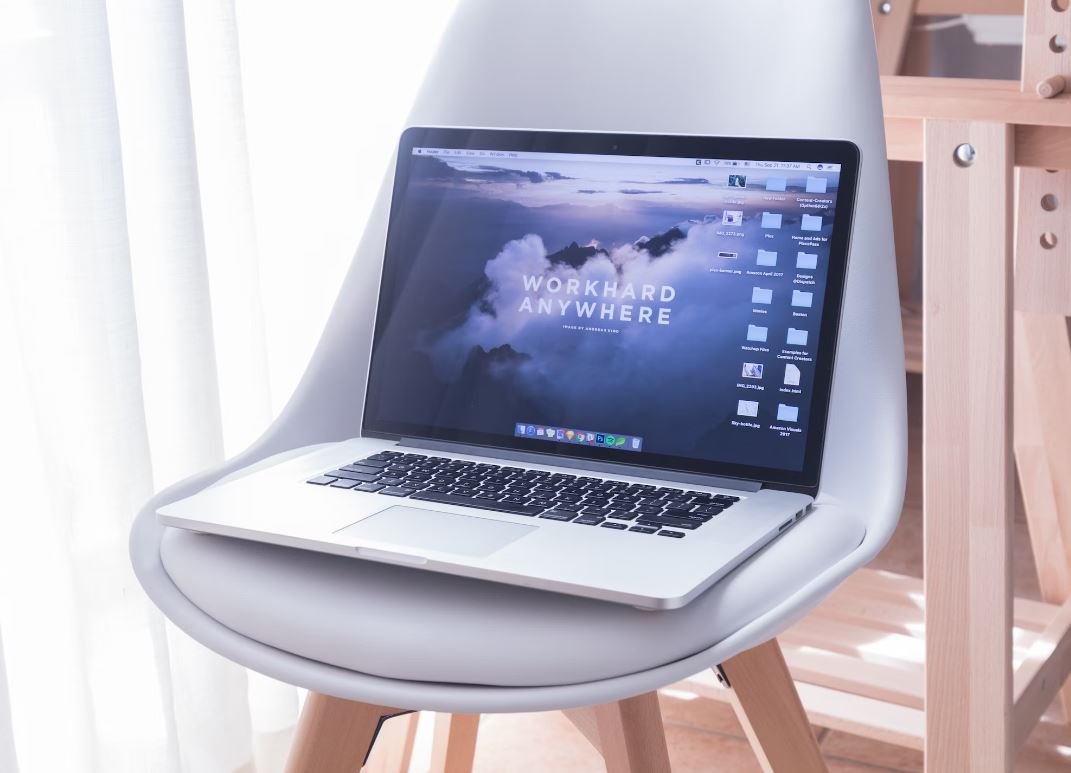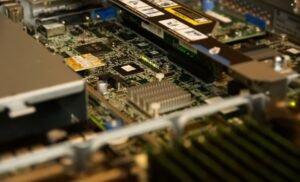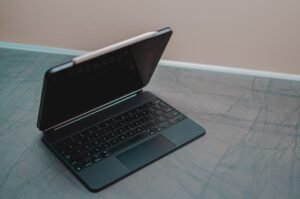AI Art vs Real Art
In the realm of artistic expression, the emergence of Artificial Intelligence (AI) has brought about a significant shift. AI-generated art, created through algorithms and machine learning, has gained popularity in recent years. This article aims to explore the differences between AI art and traditional art forms, highlighting the unique aspects and potential implications of each.
Key Takeaways:
- AI-generated art is created using algorithms and machine learning, while traditional art is produced through human creativity and skill.
- AI art challenges the notions of authorship and authenticity, raising questions about the role of human artists in the future.
- Traditional art possesses a rich history and cultural significance that AI art lacks.
- AI-generated art has the potential to push the boundaries of creativity and inspire new artistic approaches.
The Distinction between AI Art and Real Art
AI art, also known as computational creativity, relies on algorithms and machine learning to generate art. It involves training AI models on vast datasets of existing artwork to teach them to create original pieces. This process allows AI to mimic various art styles and techniques.
*AI-generated pieces can evoke emotional responses similar to those elicited by human-created art.* This ability challenges the belief that true creativity is exclusive to human artists. While AI can produce visually stunning results, some argue that it lacks the depth and intentionality found in human-made art.
Implications for the Future of Art
The rise of AI art presents unique implications for the future of artistic expression. Here are some key considerations:
- **Changing Notions of Authorship:** AI-generated art blurs the lines of authorship, as the artist is often seen as the programmer or the AI itself. This challenges the traditional understanding of the artist as the sole creator of the artwork.
- **Shifting Perspectives on Authenticity:** The concept of authenticity becomes complex with AI art. Can an algorithm truly be considered an artist? How does this impact the value and marketability of AI-generated pieces?
- **Preserving Human Artistic Skills:** As AI advances, there is a concern that the role of human artists may diminish. However, the unique creativity, emotion, and human experiences captured in traditional art forms make them distinct and invaluable.
- **Exploration of New Artistic Frontiers:** AI has the potential to revolutionize artistic techniques and explore uncharted creative territories. It can inspire new art styles, challenge traditional norms, and stimulate artistic innovation.
A Comparative Analysis
| Traditional Art | AI Art |
|---|---|
| Has a rich history and cultural significance. | Relatively new and lacks historical context. |
| Created by human artists. | Generated by algorithms and machine learning. |
| Reflects personal experiences and emotions. | Emotionally evocative, but lacks human experiences. |
Finding the Balance
As AI art continues to evolve, it is crucial to find a balance between the human touch and the possibilities offered by technology. The integration of AI into the artistic process can amplify human creativity and open up new avenues of expression.
AI-generated art should be viewed as a complementary addition rather than a complete replacement for traditional art. By embracing the unique qualities of both, artists can push the boundaries of creativity and explore innovative ways of artistic expression.

Common Misconceptions
1. AI Art is Not Real Art
One common misconception about AI art is that it is not considered real art by some people. However, this belief fails to recognize the creativity and technical skills involved in creating AI-generated artworks.
- AI-generated art requires complex algorithms to analyze and mimic human creativity.
- AI art still requires human intervention and guidance for the final output.
- AI art challenges traditional notions of creativity and expands the definition of artistry.
2. AI Art is Replacing Human Artists
Another misconception is the fear that AI art will replace human artists and make them obsolete. While AI technology has advanced in creating impressive artworks, it is important to understand that AI art and human art can coexist and even collaborate.
- AI technology can be a tool to enhance human artistic abilities and creativity.
- AI-generated art can inspire and push human artists to explore new possibilities.
- Human artists bring unique perspectives, emotions, and experiences that cannot be replicated by AI.
3. AI Art Lacks Emotional Depth
Some people believe that AI-generated art lacks emotional depth compared to art created by human artists. However, AI algorithms can be designed to capture and convey emotions, challenging this misconception.
- AI art can reflect human emotions by analyzing vast amounts of data and patterns.
- Certain AI models are trained to understand and respond to human emotions, creating emotionally resonant artworks.
- AI-generated art can provide a fresh perspective on emotions and challenge traditional artistic expression.
4. AI Artists Cannot Generate Original Ideas
There is a misconception that AI art is incapable of generating original ideas and is solely reliant on existing data. However, AI algorithms can be programmed to produce unique and original artwork, going beyond simple replication.
- AI algorithms have the ability to generate unexpected and novel combinations of concepts and styles.
- AI-generated art can explore uncharted creative territories and present new artistic trends.
- AI art can serve as a source of inspiration for human artists, sparking innovative ideas and approaches.
5. AI Art is Only for Technically Inclined Artists
It is a misconception that AI art is exclusive to technically inclined artists who have expertise in programming or machine learning. While technical knowledge can benefit the creation of AI-generated art, anyone with an artistic vision can embrace AI as a tool for their creative expression.
- There are user-friendly AI tools available that require minimal technical knowledge to create AI-generated art.
- Artists can collaborate with technologically adept individuals to incorporate AI into their artistic process.
- AI art can be a means of democratizing art by enabling artists from various backgrounds to engage with emerging technologies.

Introduction
Artificial intelligence (AI) is transforming various industries, including the art world. As AI technology continues to advance, it has become capable of creating impressive artworks that rival those produced by human artists. This article explores the debate between AI art and traditional real art, comparing their origins, techniques, and societal impact. Below are ten visually captivating tables that present significant points and data on this topic.
Table: Historical Origins
The following table compares the historical origins of AI art and real art, shedding light on their distinct origins and evolution.
| AI Art | Real Art |
|---|---|
| Emerged in the modern era (20th century) with advancements in machine learning and computational power. | Dates back thousands of years and encompasses various mediums such as painting, sculpture, and architecture. |
| Rooted in the intersection of technology and creativity. | Born from human imagination and expression. |
Table: Creation Process
This table explains the contrasting processes involved in creating AI art and real art, showcasing their different methodologies.
| AI Art | Real Art |
|---|---|
| Generated using algorithms and neural networks, trained on vast amounts of visual data. | Originates from the artist’s vision and requires manual execution of techniques, utilizing brushes, pens, or other tools. |
| AI art creation often involves iterations and fine-tuning of mathematical models. | Real art allows for spontaneous expression, adapting to the artist’s emotions and thoughts in the moment. |
Table: Visual Styles
Visual styles greatly differ between AI art and real art. This table provides a comparison of their characteristic styles.
| AI Art | Real Art |
|---|---|
| Can emulate diverse styles, from abstract and futuristic to realistic and surreal. | Captures the unique style and artistic voice of individual artists, reflecting their perception of the world. |
| Can seamlessly blend multiple styles or mimic famous artists’ works. | Allows for personal interpretation and expression, resulting in various art movements throughout history. |
Table: Human Interaction
This table highlights how AI art and real art interact with human participation and the role of artists in the creative process.
| AI Art | Real Art |
|---|---|
| Artists play an active role in developing the AI algorithm but are not directly involved in every individual creation. | Artists personally create each piece, infusing their emotions, experiences, and unique perspectives. |
| Requires human intervention for refining the generated output or selecting final artworks. | Provides a direct relationship between the artist and the artwork, encompassing personal narratives and intentions. |
Table: Impact on the Art Market
The following table analyzes the repercussions of AI art and real art on the art market, including pricing, demand, and authenticity.
| AI Art | Real Art |
|---|---|
| Challenges the traditional value model as determining worth becomes more nuanced due to the involvement of algorithms. | Highly subjective pricing based on factors like artist reputation, historical significance, and physical craftsmanship. |
| May result in increased accessibility, allowing digital art ownership and scarcity through non-fungible tokens (NFTs). | Long-established art market with galleries, auctions, and physical artworks as tangible investments. |
Table: Ethical Considerations
This table highlights the ethical considerations associated with AI art and real art, as well as the potential impact on society.
| AI Art | Real Art |
|---|---|
| Raises questions about authorship, as AI-generated works blur the lines between artist and machine. | Provides a clear connection between the artist and their creation, preserving artistic integrity and originality. |
| Potential mass production and commodification of AI-generated art, posing risks to the livelihood of human artists. | Embodies human emotions, cultural values, and narratives, reflecting the societal context in which it arose. |
Table: Impact on Creative Process
This table demonstrates the effects of AI art and real art on the creative process employed by artists.
| AI Art | Real Art |
|---|---|
| Expands possibilities and creativity by removing limitations, encouraging experimentation and exploration. | Encourages personal growth, skill development, and exploration of traditional and innovative techniques. |
| Allows artists to collaborate with the machine to create entirely new aesthetics and artistic endeavors. | Demands deep introspection, self-expression, and continuous development of artistic style and voice. |
Table: Perception in the Art World
This table explores the contrasting perceptions of AI art and real art within the traditional art world.
| AI Art | Real Art |
|---|---|
| Regarded by some as an exciting venture into the future of art, while others perceive it as a threat to human creativity. | Valued for its historical context, craftsmanship, and the personal message conveyed by the artist. |
| Admired for its unique process showcasing the symbiotic relationship between technology and human intellect. | Recognized for the emotional impact it evokes, sparking dialogue and introspection among viewers. |
Conclusion
The realm of art is undergoing a transformative phase as AI art emerges alongside traditional real art. The tables presented in this article highlight the unique characteristics, processes, and implications of both AI art and real art. The integration of AI in the artistic domain raises fundamental questions about creativity, authorship, and the future of human expression. As society continues to embrace AI, the dynamic between the artist, technology, and the audience evolves, shaping the narrative of art itself.
Frequently Asked Questions
What is AI art?
AI art refers to artwork that is created or generated using artificial intelligence algorithms or techniques. It involves the use of machine learning and deep learning algorithms to analyze and interpret visual data in order to generate artistic output.
What is real art?
Real art, also known as traditional or conventional art, is artwork that is created by human artists using their skills, creativity, and imagination. It encompasses various forms of expression such as painting, sculpture, drawing, photography, and more.
How does AI create art?
AI creates art by using algorithms to process and analyze large amounts of visual data. It learns patterns, styles, and techniques from existing artwork in order to generate new artistic output. It can mimic different art styles or create entirely new ones based on the data it has been trained on.
Is AI art as valuable as real art?
The value of art, whether AI-generated or created by humans, is subjective and can vary depending on factors such as the artist’s reputation, the uniqueness of the artwork, and the demand for it in the art market. Some people may appreciate the novelty and computational aspect of AI art, while others may prefer the human touch and emotional depth of traditional art.
Can AI replace human artists?
While AI has the ability to generate visually appealing artwork, it is unlikely to completely replace human artists. AI lacks the emotional intelligence, creativity, and subconscious elements that human artists bring to their work. Additionally, the artistic process often involves personal experiences and human expression that cannot be replicated by machines.
Is AI art original?
AI art can produce artwork that appears original and unique, but it is important to recognize that the AI algorithms are trained on existing art datasets. This means that the generated output is influenced by the patterns and styles it has learned from the training data. However, AI can also produce surprising and unexpected results that may not resemble any existing artwork.
Does AI art have copyright?
The issue of copyright in AI art is complex and currently lacks clear legal consensus. In some jurisdictions, the copyright may belong to the human artist who trained the AI model, while in others, it may be argued that the artwork is generated by the AI system itself. The legal framework surrounding AI art is still being developed.
Are there ethical concerns related to AI art?
Yes, there are ethical concerns associated with AI art. One such concern is the potential for AI to generate artwork that infringes on copyright or plagiarizes existing artists’ work. Another concern is the influence of biased training data on the generated output, which could perpetuate societal biases or stereotypes. It is important to address these ethical issues as AI art becomes more prevalent.
Can AI art evoke emotions?
AI art has the potential to evoke emotions, but it may not have the same depth and emotional impact as art created by human artists. AI algorithms can generate visually appealing artwork, but they do not possess the same personal experiences, intentions, or emotions that human artists bring to their work. The emotional connection with art often comes from the human interpretation and expression embedded in the artwork.
What is the future of AI art?
The future of AI art is still evolving and uncertain. As technology continues to advance, AI algorithms may become more sophisticated and capable of producing even more intricate and evocative artwork. However, the role of human artists in the creative process and the ethical considerations surrounding AI art will continue to shape its future.
“`




